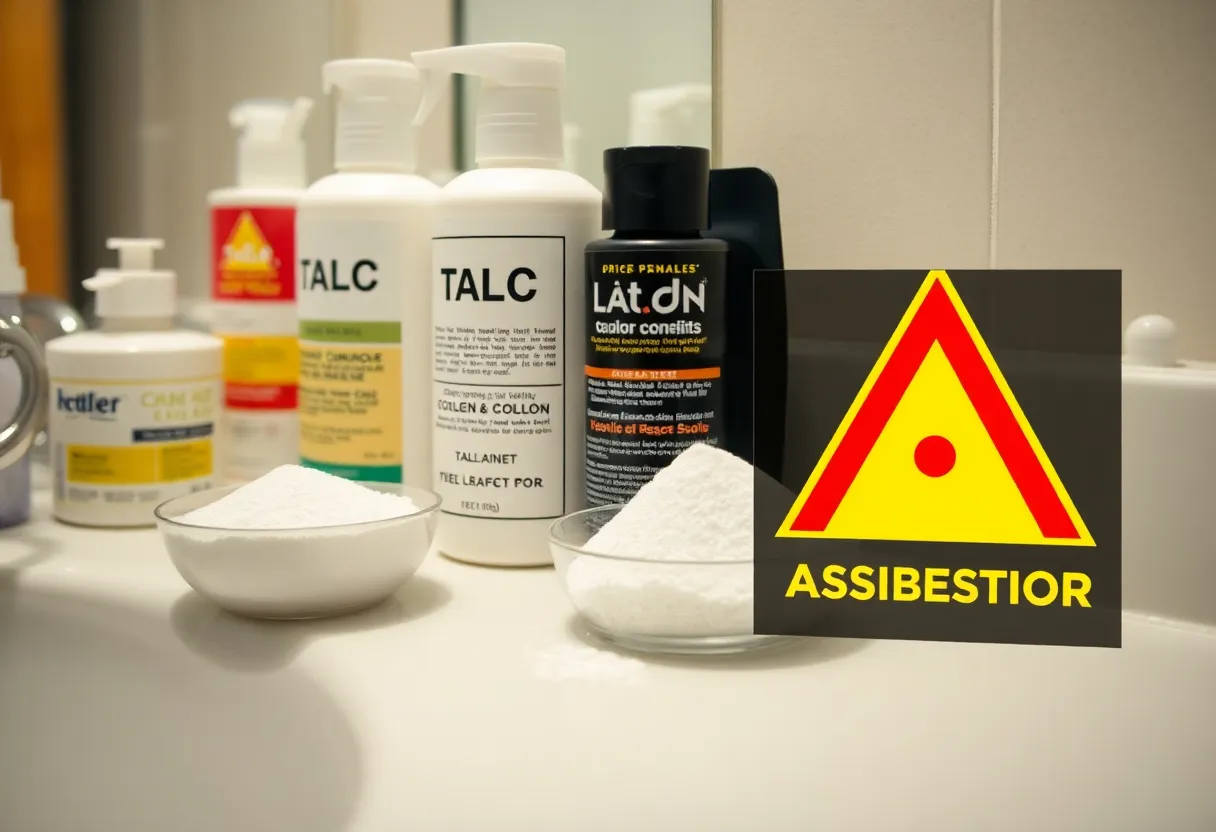News Summary
New FDA Proposal Targets Asbestos Testing in Talc Cosmetics
On December 26, 2024, the U.S. Food and Drug Administration (FDA) unveiled a proposed rule aimed at creating a universal testing process for asbestos contained within talc-based products, particularly in the realm of cosmetics. This initiative reflects a growing concern over the dangerous implications of asbestos exposure, a known human carcinogen that poses serious health risks including mesothelioma, a rare and deadly cancer affecting the lining of the lungs and abdominal cavity.
Understanding the Threat of Asbestos
The alarming reality is that consumers have developed mesothelioma as a result of using products contaminated with asbestos. The FDA’s proposal, titled “Testing Methods for Detecting and Identifying Asbestos in Talc-Containing Cosmetic Products,” will require manufacturers to adhere to stringent testing protocols. Specifically, they will have to employ two methods for testing: Polarized Light Microscopy (PLM) with dispersion staining and Transmission Electron Microscopy (TEM) combined with Energy Dispersive Spectroscopy (EDS) and Selected Area Electron Diffraction (SAED).
Mandatory Compliance For Manufacturers
Manufacturers will be mandated to test representative samples from each batch or lot of talc-containing products or the talc ingredient itself. Alternatively, they can rely on a certificate of analysis from their talc supplier. A new compliance measure would require manufacturers to maintain records that document adherence to the proposed testing standards. Should these rules be finalized, any cosmetic product that does not meet the testing or recordkeeping requirements could be classified as adulterated under the Federal Food, Drug, and Cosmetic Act (FD&C Act).
The Implications of Contamination
If asbestos is detected in a cosmetic product, it would be deemed both tainted and hazardous under the FD&C Act. The FDA is actively soliciting public comments on the proposal, which will be open for a 90-day period following its publication. Given the heightened consumer awareness regarding the risks associated with talc, this proposal comes at a pivotal time.
The Controversy Surrounding Talc
Talc, a naturally occurring mineral prized for its moisture-absorbing properties, has long been used in cosmetics ranging from blush to eye shadow. However, there is a significant risk of asbestos contamination during mining processes. The public outcry against asbestos-laden products has intensified, leading some companies to abandon talc entirely in favor of safer alternatives such as cornstarch. Notably, Johnson & Johnson faces approximately 60,000 lawsuits related to asbestos exposure from popular products, including Johnson’s Baby Powder.
Legal Consequences for Companies
In a landmark mesothelioma lawsuit, Avon was ordered to pay $24 million, leading the company to file for bankruptcy in an effort to escape future liabilities linked to asbestos exposure. The reality remains that various talc-containing products have been on the market since the 20th century, heightening the concern and skepticism among consumers and health advocates alike.
Previous FDA Actions and Industry Reactions
Earlier testing by the FDA revealed traces of asbestos in talc-containing cosmetics from retailers like Claire’s Stores, prompting product recalls and further investigations. Johnson & Johnson took significant steps by removing talc from its baby powder line in North America in 2020, followed by a global phase-out in 2023, while maintaining that their products remain safe.
This regulatory shift comes amid ongoing litigation against corporations over the links between talc-based products and cancer. Since 2021, industry testing has shown no asbestos in over 150 cosmetic samples evaluated by the FDA. Nonetheless, the American Cancer Society advises that if there is a potential risk associated with talc, it is likely minimal.
The Road Ahead
The FDA’s proposed rule stands as a critical step toward ensuring consumer safety in the cosmetics industry. By enforcing rigorous testing and compliance standards, the FDA aims to diminish the risk associated with asbestos in talc, ultimately protecting the public from the devastating effects of mesothelioma and other asbestos-related diseases.
Deeper Dive: News & Info About This Topic
HERE Resources
Virginia Jury Orders Norfolk Southern to Pay $5 Million for Asbestos Death
Family Awarded $8.8 Million After Asbestos Exposure Case
Asbestos Victims Raise Awareness Amid New Legal Precedents
Florida Firefighters At Risk: Alarm Bell for Mesothelioma and Lung Cancer!
Alabama’s Sordid Asbestos Legacy: A Call to Action for Victims and Families
Surge in Mesothelioma Deaths: A Deep South Crisis Uncovered
Common Sources of Asbestos Exposure
A Shocking Lawsuit in Portland, Maine
Portland, Maine: A Lawsuit Shakes Confidence in Talcum Powder Safety
Mesothelioma and Asbestos News in 2024: Key Updates from Across the Nation



















